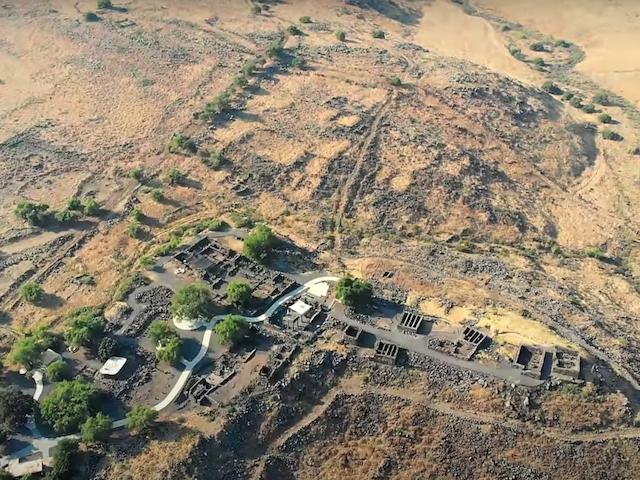Nestled in the rugged hills of northern Israel lies the ancient city of Chorazin, a site that has long intrigued scholars, theologians, and archaeologists alike. According to various passages in the New Testament, this city was not just another stop on the map; it was a place where Jesus Christ himself purportedly walked, preached, healed the sick, and performed miraculous deeds. However, despite centuries of searching, tangible evidence of a first-century temple in Chorazin—a site that would confirm the Biblical accounts—remained elusive. That is, until now.
The Quest for Biblical Validation
For decades, the quest to unearth physical evidence of a first-century structure in Chorazin seemed to be a tantalizing yet unattainable goal. Early in the 20th century, in 1905, archaeologists discovered a synagogue crafted from basalt stones, adorned with Jewish motifs. Yet, this impressive structure dated back to the third century C.E., more than 200 years after the time of Jesus. The question remained: where was the temple where Jesus is said to have delivered his teachings and performed his miracles?
But the sands of time often hold secrets, and in 2022, a team of determined archaeologists led by Achia Cohen-Tavor of Dagesh Tourist Archaeology made a discovery that has sent shockwaves through the archaeological community and the world of Christian theology.
#Archaeologists make 'groundbreaking' discovery at Biblical site where Jesus is said to have performed miracles, in the #ancient #Israeli city of Chorazin. pic.twitter.com/st7XVTMSus
— Hans Solo (@thandojo) August 10, 2024
Unveiling the Hidden Treasures Beneath Chorazin
As Cohen-Tavor and his team meticulously excavated the third-century synagogue, they stumbled upon something extraordinary beneath its stone floor—strategically placed boulders that predate the existing synagogue by several centuries. These ancient stones, hidden away for nearly two millennia, may very well be part of an older temple, one that stood on this sacred ground during the very lifetime of Jesus Christ.
But the discovery didn’t end with the boulders. Scattered among these stones were artifacts that could hold the key to unlocking Chorazin's ancient past—pottery shards, coins, and other relics, each whispering secrets of the city's bygone days. Cohen-Tavor’s excitement was palpable as he described the potential of these findings: “I can’t date the rock itself when it was put here, but what I can date is the pottery and, hopefully, coins coming from between the rocks and definitely what’s beneath them. Whatever I can get from between those stones would be dating the construction of the synagogue here.”
What if Jesus really did preach in Chorazin? Archaeologists might have just uncovered the proof we've been waiting for. Stay tuned for more... pic.twitter.com/5rD2S0A94u
— Words (@itswords_1) August 18, 2024
The Profound Implications of the Discovery
Should the artifacts found among the boulders be definitively dated to the first century, it would be nothing short of a historical and theological revelation. For the first time, concrete evidence would link the site of Chorazin to the era of Jesus, potentially marking the very spot where he preached to the people of this ancient city. This would not only confirm the Biblical narrative but also elevate Chorazin to a place of unparalleled significance in Christian history.
A Milestone in Biblical Archaeology
“This is a groundbreaking discovery,” declared Cohen-Tavor, whose career has spanned numerous significant excavations across the globe. “For me, it’s definitely one of the most important excavations I’ve ever directed.”
Archaeologists may have discovered evidence of the temple where Jesus performed miracles in Chorazin, Israel, providing new insights into the Biblical site’s history. jesus #Israel #miracles #christianity #BiblicalArchaeologyhttps://t.co/Hb3dnOA1uv
— Ancient Origins (@ancientorigins) August 12, 2024
The discovery at Chorazin represents more than just an archaeological find; it is a bridge connecting the past to the present, a tangible link to the days when Jesus walked the earth. As researchers continue to analyze the artifacts and the boulders beneath the synagogue, the world waits with bated breath for what could be one of the most important confirmations of a Biblical site in modern history.
Chorazin, once cursed by Jesus for its unrepentance, may now be on the cusp of redemption—not through repentance, but through the unearthing of its ancient past, forever changing our understanding of the sacred landscape of northern Israel.


